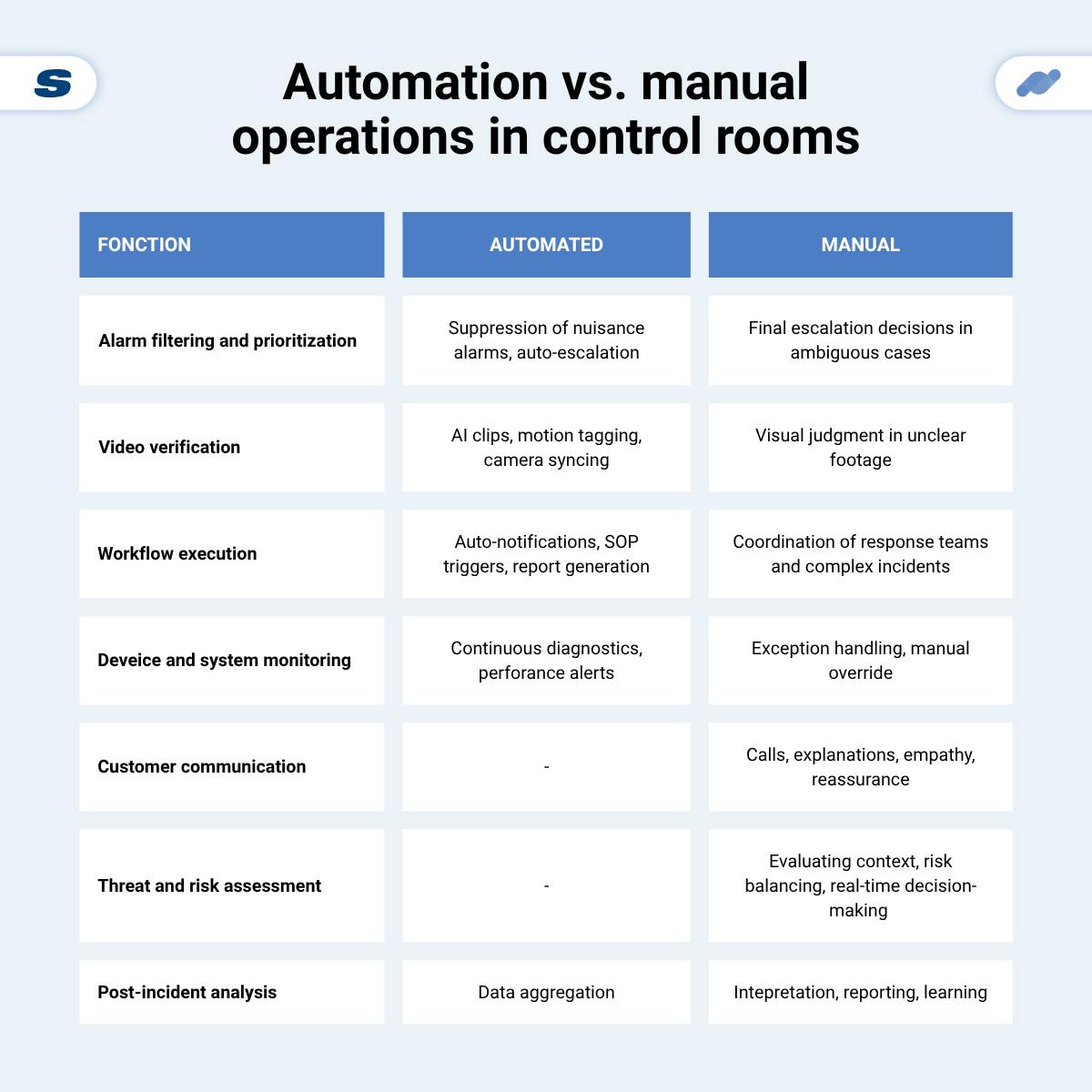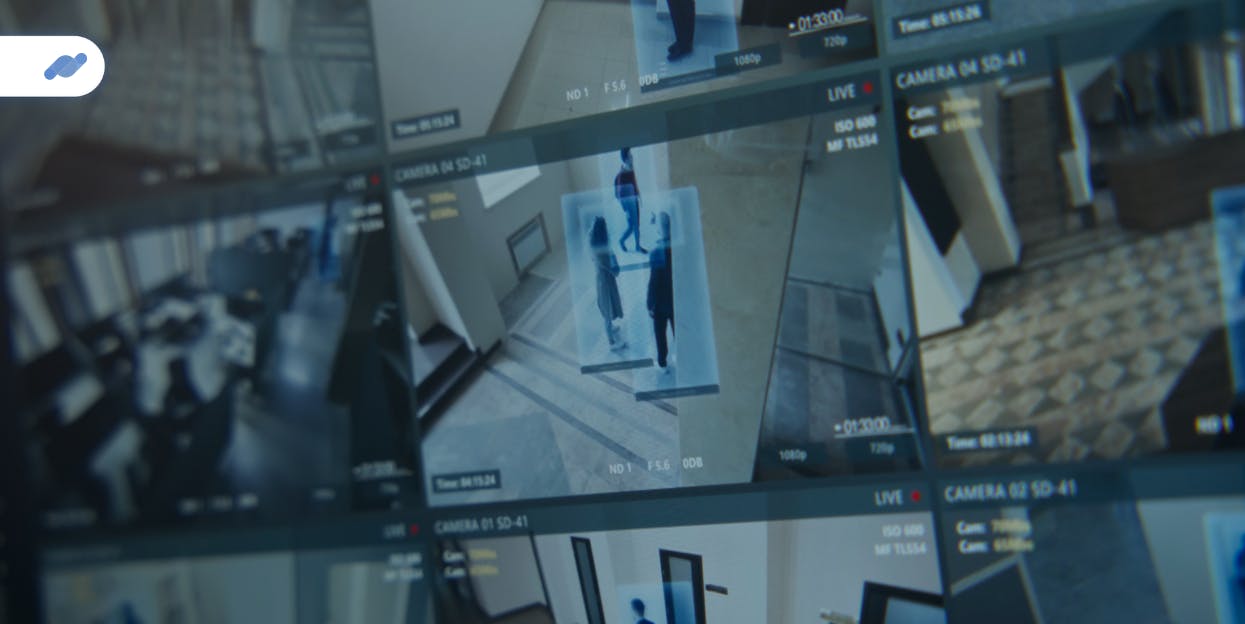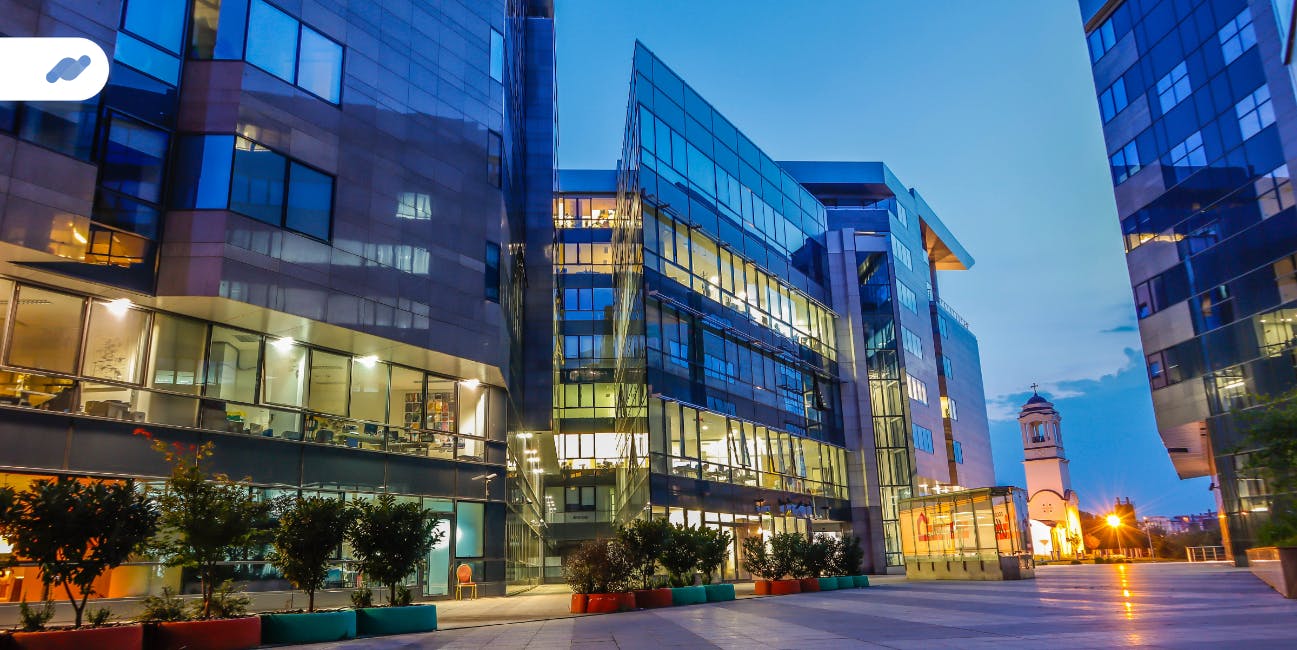
- Smart Alarm Management
What gets automated and what stays manual in modern control rooms
What gets automated
1. Alarm prioritization and filtering
Control rooms receive thousands of signals daily. AI and rule-based engines automate how alarms are scored, sorted, and escalated.
How it works:
- Repetitive or known nuisance alarms are suppressed automatically.
- Alarms are enriched with metadata (e.g., time, source type, associated video) before reaching the operator.
- Events with a combination of triggers—like motion + door open + time outside business hours—are escalated immediately.
This automation frees operators to focus on relevant events and reduces fatigue from low-value alerts.
2. Video verification and pre-processing
Operators no longer need to search through hours of footage to validate an alarm. Modern platforms provide pre-clipped video or live pop-ups based on the event context.
How it works:
- Pre-alarm and post-alarm video clips are attached to events automatically.
- AI can highlight motion, identify people or vehicles, or flag abnormal behavior.
- Multi-camera views are synchronized to show full context.
This reduces time-to-decision and improves incident verification quality.
3. Workflow and task automation
Once an event is validated, the following steps can be automated depending on its type and severity.
How it works:
- Automated calling trees notify guard services, police, or keyholders.
- Action plans are triggered based on predefined SOPs.
- Reports are pre-filled with event data and timestamps.
This ensures consistency and faster response in high-pressure situations.
4. System health and maintenance checks
Monitoring platforms now track the performance of connected devices continuously—without operator involvement.
How it works:
- Camera or sensor health (e.g., frame rate, connectivity, heat) is tracked in real-time.
- Alerts are triggered automatically for failing devices or comms.
- Routine checks can be scheduled without human intervention.
Automation ensures the system stays operational without draining technician hours.
What stays manual
1. Threat assessment and escalation decisions
Despite all the input, not every event is black or white. Operators bring experience and judgment that machines still can’t replicate.
Why:
- Understanding nuance: A person loitering could be suspicious or just waiting for a ride.
- Cross-referencing verbal info: Calls from customers or guards often add context.
- Coordinating multiple stakeholders: Escalating to police, fire, or internal teams requires coordination and clarity.
Humans remain essential for balancing procedures with discretion.
2. Customer communication and incident resolution
Operators serve as the human link between the system and the people being protected. They handle calls, offer reassurance, and manage exceptions.
Why:
- Emotional intelligence: Calming a distressed customer or making a judgment call isn’t something automation can handle well.
- Handling disputes or unclear situations: A malfunctioning sensor or misunderstood alert often needs direct contact.
- Confirming actions in high-risk cases: Clients often require confirmation before dispatch or action.
The human voice still matters in building trust and accountability.
3. Investigations and post-incident analysis
When something goes wrong—or almost does—analysis and learning are essential. This process requires critical thinking, not just automation.
Why:
- Piecing together timelines across multiple systems
- Identifying gaps in procedures or training
- Producing narrative reports for legal or insurance purposes
Machines provide data. Humans turn it into insight.
Striking the right balance
The best control rooms don’t automate everything—they automate the right things. That means:
- Using automation to handle speed, volume, and standard procedures
- Keeping human oversight where risk, judgment, or communication is required
- Designing systems that are intuitive, transparent, and easy to override when necessary
A blended model improves efficiency, makes teams more resilient, keeps operators focused, and gives customers faster, better service. It also allows businesses to scale operations without compromising quality.
Final takeaway



